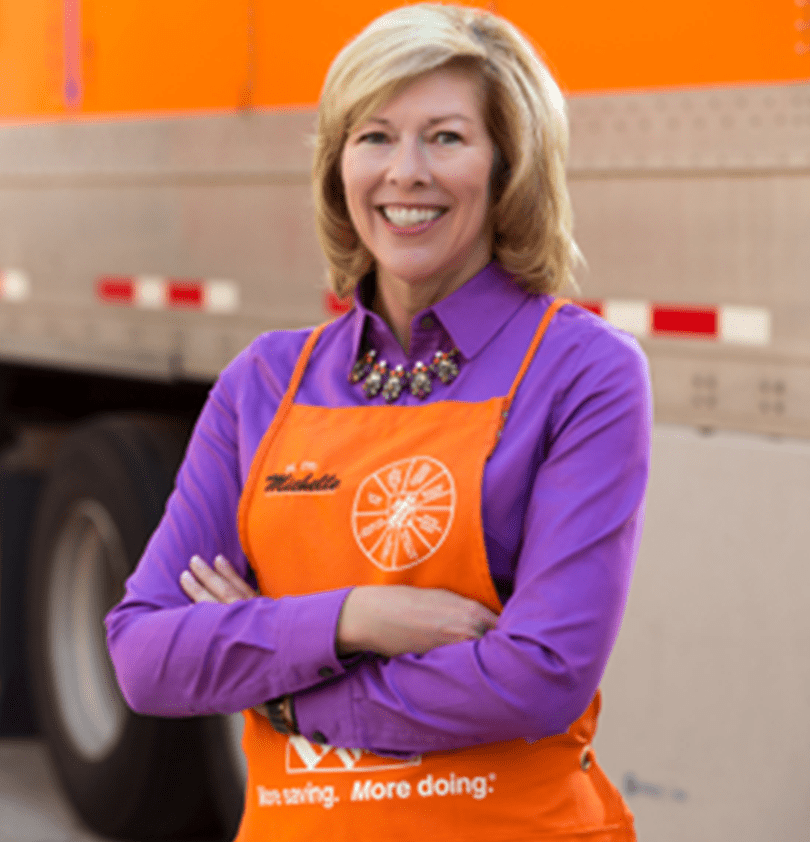In the hours before a hurricane, what do people need most as they try to prepare their homes for the worst? Plywood, hammer and nails, tarps, tape, ropes. Where do they turn? For many, it’s the urgent run to The Home Depot that may make a difference between protection and destruction.
 Michelle Livingstone, VP of Transportation for The Home Depot and an AWESOME Advisor, says, “In a time of emergency, we try to be the last to close and the first to open.”
Michelle Livingstone, VP of Transportation for The Home Depot and an AWESOME Advisor, says, “In a time of emergency, we try to be the last to close and the first to open.”
Preparing for a disaster is only part of the job. The aftermath of a hurricane, flood or fire tests The Home Depot’s supply chain, too, as their stores provide supplies for clean-up and restoration: buckets, bags, masks, gloves, brooms, tools — and more wood, tarps, tape and ropes.
Michelle has been with The Home Depot for 10 years and is responsible for the movement of shipments into and within The Home Depot‘s multi-channel supply chain. She says this year’s string of disasters was one of the most challenging. She describes how the team goes into action. Many of the stores extend their hours, some staying open around the clock.
She and her transportation team are well aware that The Home Depot’s inventory of more than 35,000 sku’s can’t help people unless what they need is there in the store. The Home Depot doesn’t have a private fleet so “We work shoulder-to-shoulder with our core partners,” she says.
The company even stages essential supplies ahead of the hurricane season in warehouses outside potential strike zones so they can quickly deploy them when a storm is spotted.
“We set up a Hurricane Command Center at our Store Support Center in Atlanta and it’s something like the open outcry system on Wall Street,” she explains. “Someone calls out ‘I need 10 trucks,’ and one of Home Depot’s select carriers will respond ‘I have seven available’ and another carrier partner will say, “I can give you three.’” Home Depot delivered thousands of loads during Hurricanes Harvey, Irma, and Maria.
“We call it ‘hurricane mode.’ At the front end of a disaster, it’s about anticipating. And at the back end, it’s about responding. But we couldn’t do it without systems and processes, our amazing associates and vendors, and, most of all, partners.”
